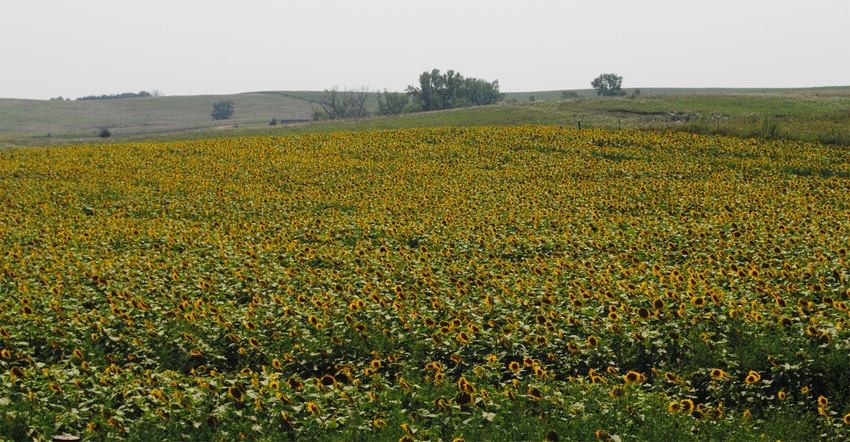
As sunflower growers look to a new growing season, it often helps to look back at the previous year as a potential indicator for concerns that may come up with the crop in 2017. There was very little insect pressure on sunflowers in much of Nebraska's Panhandle last season, according to Nebraska Extension entomologist Jeff Bradshaw.
"I did see some locations with high red seed weevil damage, but very little pressure from many other sunflower pests," Bradshaw says. "This year, if the winter continues to turn out relatively mild, we might expect high populations of sunflower moth migrating from the South if winter survival increases.”
Bradshaw notes that there is evidence that some commercial sunflower seed varieties may have natural resistance to sunflower moth. "We are currently in the process of evaluating sunflower lines for resistance to sunflower moth," he says. "Some of our commercial varieties may have a high level of resistance."
Over the past several decades, researchers have typically recommended delayed planting dates for sunflowers to avoid some pests. "Our data now suggests that this often-used recommendation may no longer be valid," Bradshaw says. This is in part due to the generally lower populations of some of these pests that were around in the 1970s and 1980s when these recommendations were developed. Secondly, the use of effective insecticides during flowering is widespread and has done a good job at keeping pests in check.
On the disease side, Nebraska Extension plant pathologist, Robert Harveson, reports rust and Phomopsis stem rot as the major sunflower concerns in the Panhandle in 2016. He notes that both diseases showed up later this past season than in 2015. Pathologists also observed some Rhizopus head rot late in the season, due to hailstorms. This disease is opportunistic, according to Harveson, commonly striking heads after some form of mechanical damage from hail or insect feeding.
He also notes that another presumed virus-like disease of unknown pathogen identity was being studied. This disease was found in three separate locations in Box Butte and Kimball counties between 2010 and 2014, and is still under investigation. It is not known at this point whether the viral pathogen will cause problems in the future, but researchers did take note of its existence.
USDA National Agricultural Statistics Service recently released harvest numbers for sunflowers in the state. Oil sunflower production was down 11% from 2015, at 37.8 million pounds. Yields averaged 1,350 pounds per acre, down about 230 pounds per acre from the previous year. About 28,000 acres of oil sunflowers were harvested in Nebraska, which was up 4% from 2015. Non-oil sunflower acreage came in at 11,000 acres, which was down by 6,500 acres from the previous year. Production on non-oil sunflowers was down by 45% from 2015 at 20.4 million pounds total. The yield was off from 2015 as well by 250 pounds per acre, averaging 1,850 pounds per acre statewide.
You can learn more about sunflower pests and diseases by contacting Bradshaw at [email protected], or Harveson at [email protected].
About the Author(s)
You May Also Like






